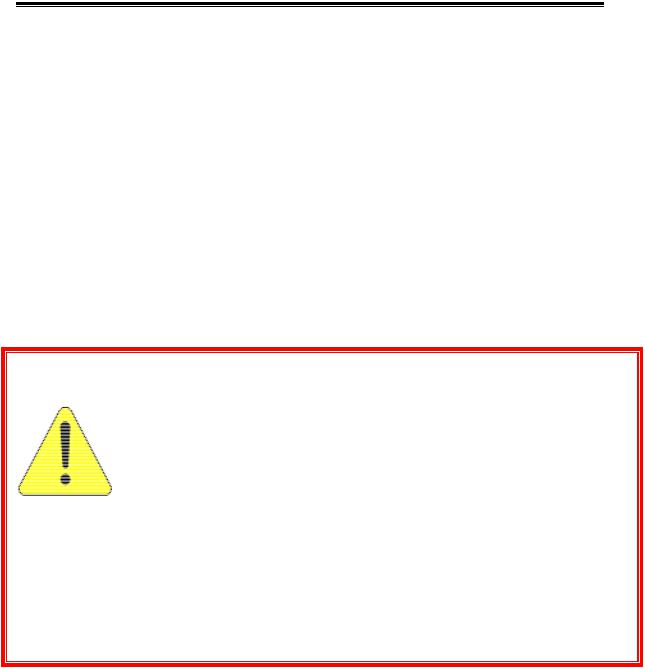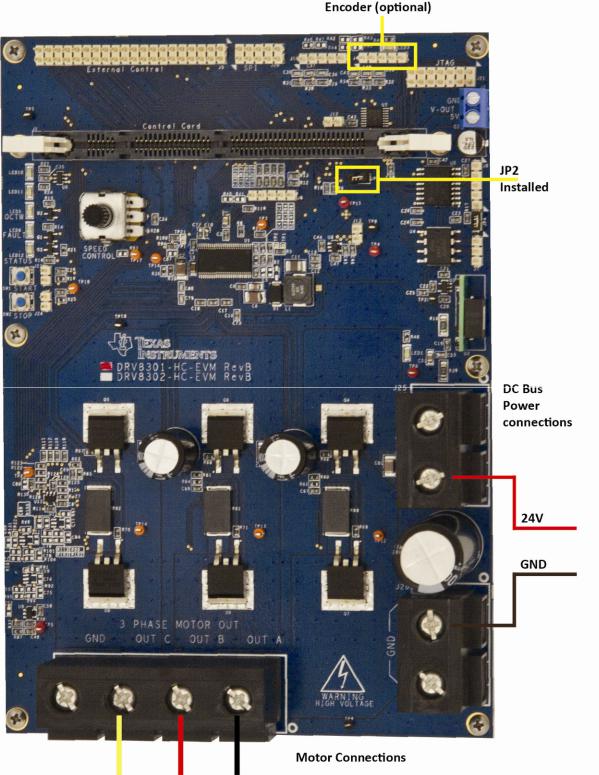Texas instruments DRV8302-HCEVM, DRV8301-HC-EVM User Manual

“DRV830x-HC-C2-KIT” How to Run Guide
Version 1.0 August 2011 - TIDU396 |
C2000 Systems and Applications Team |
This Guide explains the steps needed to run the DRV830x-HC-C2-KIT with the software supplied through controlSUITE. This guide pertains to either the DRV8301-HC-EVM or the DRV8302-HC- EVM. The software is located at:
controlSUITE\developement_kits\DRV830x-HC-C2-KITv*\
The following projects are currently available for the kit:
- Fixed/Floating point projects based on Piccolo (TMS320F2803x or TMS320F2806x, using v3.1 DMCLib)
•PM_Sensorless: Sensorless Field Oriented Control of Permanent Magnet Motor
•BLDC_Int: Sensorless Trapezoidal Control of BLDC Motors based on BEMF Integration
The document assumes the user has read the Kit’s Hardware Reference Guide and understood all the safety measures that need to be taken. The guide is found under
controlSUITE\developement_kits\DRV830x-HC-C2-KITv*\~Docs\
WARNING
This EVM is meant to be operated in a lab environment only and is not considered by TI to be a finished end-product fit for general consumer use.
This EVM must be used only by qualified engineers and technicians familiar with risks associated with handling high voltage electrical and mechanical components, systems and subsystems.
This equipment operates at voltages and currents that can result in electrical shock, fire hazard and/or personal injury if not properly handled or applied. Equipment must be used with necessary caution and appropriate safeguards must be employed to avoid personal injury or property damage.
It is the user’s responsibility to confirm that the voltages are identified and understood, prior to energizing the board and or simulation. When energized, the EVM or components connected to the EVM should not be touched.
Hardware Configuration
To experiment with digital motor control the following hardware components are needed:
DRV830x-HC-EVM
TMS320F28035 controlCARD;
PMSM or BLDC Motor
PC with Code Composer Studio (CCSv4) installed
Additional instruments such as oscilloscope, digital multi-meter, current sensing probe and function generator.
A high voltage DC power supply (Up to 60V DC)
The experimental setup and connection are illustrated in the following section. Refer to the Hardware Guide and DRV830x-HC-EVM schematic file for detailed configuration of each component and connection of the system in detail.
Note: Keep all the power supplies to zero unless directed to energize.
There are two main power domains on the DRV830x-HC-EVM platform:
1)Controller Power Domain which provides the 5V and 3.3V for the microcontroller, the logic and the sensing circuit present on the board.
2)DC Bus Power is the high voltage line that provides the voltage to the DRV830x chip to generate the power to the motor. The DC Bus is provided by an external DC power supply connected to the PVDD and GND terminals. (Max 60V DC)

Motor Control Experiment HW Setup Instructions
Unpack the DIMM style controlCARD and verify that the DIP switch settings match FIGURE 1.
Figure 1 controlCARD DIP Switch Settings
1.Place the controlCARD in the connector slot of J1. Push vertically down using even pressure from both ends of the card until the clips snap and lock. (to remove the card simply spread open the retaining clip with thumbs)
2.Connect a USB cable to J1 on the controlCARD. This will enable isolated JTAG emulation to the C2000 device. LD4 on the controlCARD should turn on.
3.Connect a 8-60V DC power supply to the PVDD and GND terminals of the DRV830x-HC-EVM. Now LED1 and LED3 should turn on. Notice the control card LED would light up as well indicating the control card is receiving power from the board.
4.Note that the motor should be connected to the OUT A, OUT B and OUT C terminals after you finish with the first incremental build step.

Figure 2 Hardware Setup for PM_Sensorless Experiment

Figure 3 Hardware Setup for BLDC_Sensored and BLDC_Sensorless Experiments
WARNING: DC bus Capacitors would remain charged for a long time after the supply is disconnected. Use caution!
